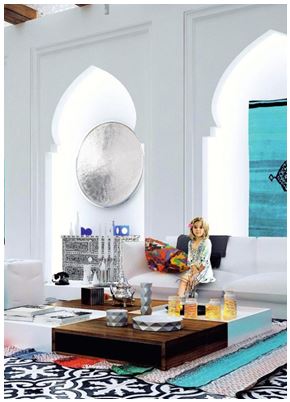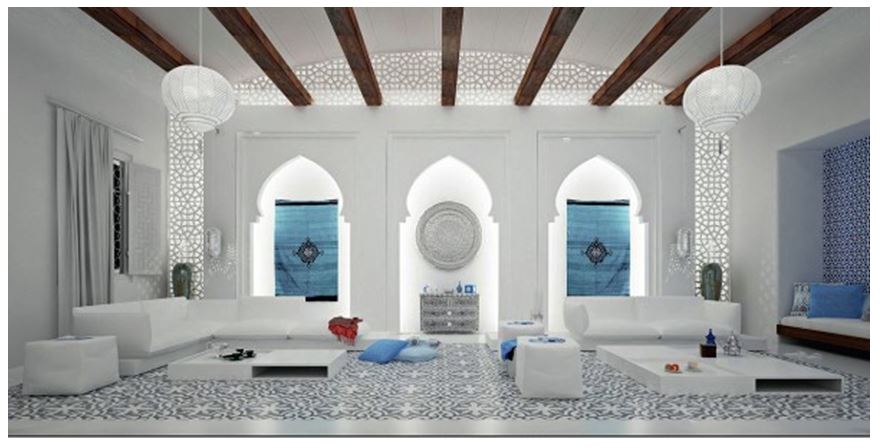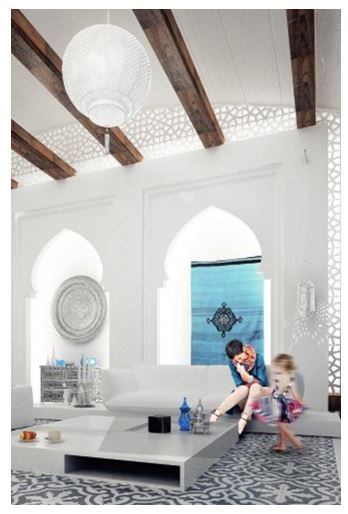Morocco is a country located in Northern Africa. There are only three countries – including Morocco – that have access to both Atlantic and Mediterranean coastlines. Morocco is a romantic place with a naturally high degree of cultural diversity. Its rich history of immigration ensured that a number of immigrants from Arab, Berber, and a lot of European countries had chosen Morocco as their home. As a result, the Moroccan Style interior design provides a number of possibilities to demonstrate and highlight these nuances and peculiarities that exist in different cultures. It is important to understand that these details must agree and complement each other in order to add up to the overall style of an interior successfully.



The Moroccan Style Interior is, therefore, also characterized by an immense diversity in architectural solutions which is easily noticeable in its highly detailed and intricate carvings, a high number of arched doorways, fabrics of various bright and vivid colors, and many other essential elements. As already stated, these parts have to exist in agreement. While highlighting individual details, one has to make sure that they will not push other equally important elements aside. As diverse as the style in itself may be, it would still be important to follow a similar color pattern for each and every separate detail.



Every individual element of Moroccan Style interior must serve the purpose of forming this style as a whole. There are four key features that ensure this: mosaic, furniture, window treatments, and accents. Mosaics are used to decorate most of the Moroccan houses and other buildings and residences. Mosaics are also used to decorate such objects as mirrors, bathroom sinks, coffee table tops, and some other elements of the interior. Furniture mostly consists of elements of wool, silk, glass, leather, clay, and metal. The primary component is mostly wool that comes in such forms as kilims, ottomans, poufs, and large cushions. These pieces of the interior would allow the style to look comfortable and “soft.” Window treatments are achieved with the use of silk curtains that elegantly decorate the windows. Ethnic patterns and bright, rich colors are mostly used to decorate windows, beds, floor, and other elements of the interior. Accents must follow traditional Moroccan patterns that include placement of lamps, wood elements in furniture, doors, windows and mirror frames. A more detailed approach would also include African cuisine and spiced tea aroma.




Should each element of this design find its implementation, the Moroccan Style interior will be reached. Such interior would create a comforting and soft feeling of being in a vibrant and exotic place that would provide a bright change in the traditional styles of many other countries. This exotic mixture of different approaches to decorating an interior indeed creates a feeling of going to an African land of highly diverse and extraordinary traditions. Also, this style would highly contrast with the prevailing trends in modern interior architecture that most houses possess. All in all, although somewhat costly, Moroccan Style interior would most likely be the most exotic and exciting experience for any customer.



